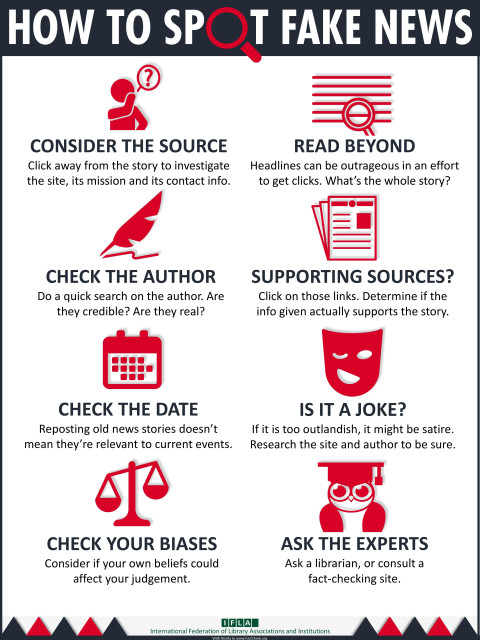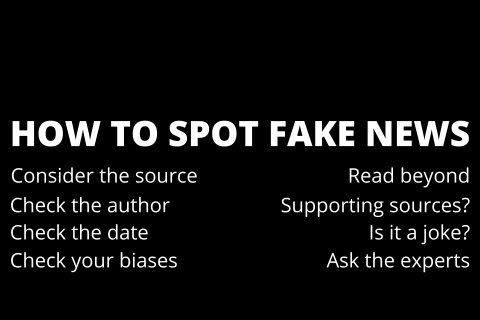Eight means to identify fake news
Libraries promote freedom of speech, among other things, but as a result of freedom of expression, the internet and the media are bursting with stuff that you cannot always be sure if to believe them or not. There are tools to distinguish between information and disinformation or misinformation. One of them is media literacy, an essential part of the civic skills promoted by libraries. The International Federation of Library Associations (IFLA) has prepared a list of eight questions based on media literacy to distinguish real news from fake news. When you doubt the authenticity and truthfulness of a source, follow these steps:
Consider the source
Click away from the story to investigate the site, its mission and its contact info.
Check the author
Do a quick search on the author. Are they credible? Are they real?
Check the date
Reposting old news stories doesn’t mean they’re relevant to current events.
Check your biases
Consider if your own beliefs could affect your judgement.
Read beyond
Headlines can be outrageous in an effort to get clicks. What’s the whole story
Supporting sources?
Click on those links. Determine if the info given actually supports the story.
Is it a joke?
If it is too outlandish, it might be satire. Research the site and author to be sure.
Ask the experts
Consult a fact-checking site. Ask the library.

